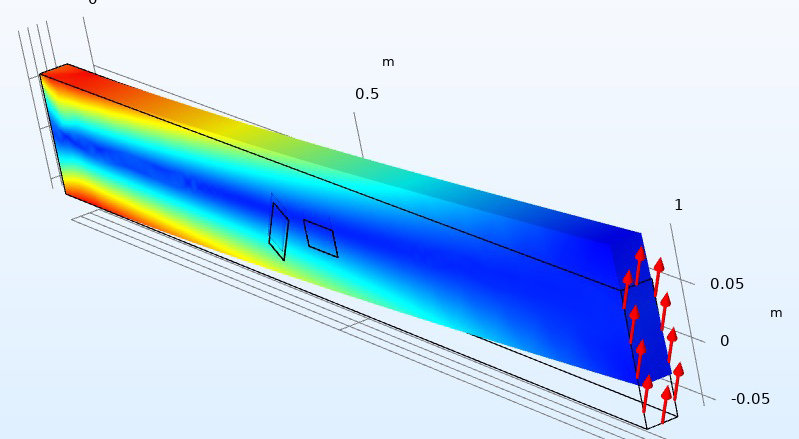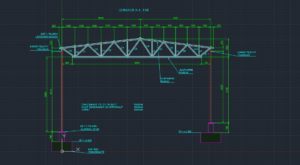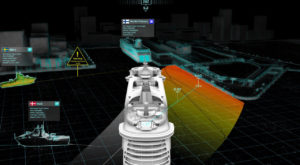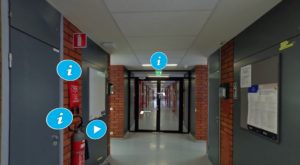Overview
Background
Mechanics is a field of physics that studies motion and forces, and deformation due to motion and forces, in fluids and solid materials. It is essential knowledge for mechanical and civil engineers, and different topics of mechanics are being taught in several courses throughout the Bachelor and Master level studies of engineering.
Traditionally, the teaching of mechanics starts with mathematical formulations of the various theories accompanied with simple hand calculations to support learning. Thus, the first three to four years of learning mechanics have a very theoretical approach on the topic, and many students feel that it is difficult to understand the theories and difficult to see why they should study them. It is not until the Master level, that the students start learning about simulation in mechanics.
However, the reality of engineering work is nowadays such that practically all problems in mechanics are studied using computer simulations, accompanied by experimental verifications. We suggest, that implementing computer simulations and experiments into mechanics teaching from the very beginning would increase students’ motivation as well as deepen the learning.
Goals
The intention of the pilot is to ultimately turn around the teaching of mechanics so that students are first studying the topic using interactive simulations that are integrated in part of the exercises, and only after that learning the mathematical formulations of the theories. In this way, they would be able to see immediately what the meaning of the theory is.
The ambition is to create an interactive learning environment where students can inspect the simulations of the educational phenomena and enhance learning by generating conversations with other students and the lecturer. Students get to play with the models and get to know the software. As the theory is slowly unwrapped during the course, the mathematical formulations of the theory, the students get to dig out the corresponding equations from their simulation models and tweak the numbers to see what happens. That is, the mathematical formulations are still there, after all they are necessary for university level knowledge, but the learning is enhanced by immediate application of the theory into practice.
Phase 1, Collecting Information from COE-C2001 Weekly Exercises
The vision is the following: For each week the assignment for students include a simulation and a series of more open-ended questions based on the educational phenomenon. The questions are designed so that for finding the correct answers students need to inspect the simulation to see what are the cause-and-effect relations of the phenomena. After finding the right answers from the simulation, students must validate, what happened and why, using the mathematical formulations and physical theories.
The simulations are created with Comsol Multiphysics software and with its Application Builder tool, it is possible to create easy-to-use applications based on the simulations. For example, the view can be created so that the students can only see the alterable variables and the results with visual representations. This allows students to concentrate on discovering the cause-and-effect relations from the simulation without struggling the software itself. The impact of implementing the simulations can be evaluated through student feedback and teachers’ reflection. We can also collect statistics of how often and when (in relation to course tasks and exams) the online resources are used, or using pre- and post-test.
Platforms and tools
- Comsol Multiphysics
- Application Builder
- Application Library
- Mycourses
Pedagogical methods
Link to literature review of interactive simulations and learning:
https://drive.google.com/open?id=1AiuhChyw8GD1qAECTDs2tsUQKuFV6c4J
Involved courses
COE-C2001 – Fundamentals of Solid Mechanics (5 ECTS)
People
Lauri Uotinen
School of Engineering, Department of Civil Engineering
Pilot leader
Eero Suhonen
School of Engineering, Department of Mechanical Engineering
Project worker
Risto Syrjä
School of Engineering, Department of Built Environment
Main assistant
Sven Bossuyt
School of Engineering, Department of Mechanical Engineering
Adviser
Jarkko Niiranen
School of Engineering, Department of Civil Engineering
Adviser
Jani Romanoff
School of Engineering, Department of Mechanical Engineering
Adviser
Heikki Remes
School of Engineering, Department of Mechanical Engineering
Adviser
Jukka Tuhkuri
School of Engineering, Department of Mechanical Engineering
Adviser






